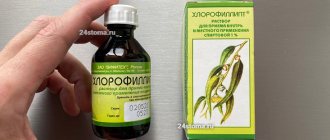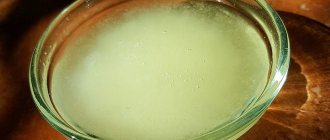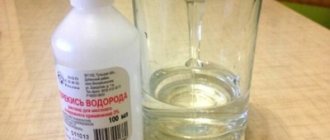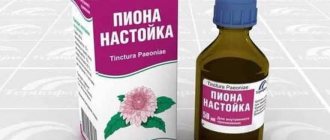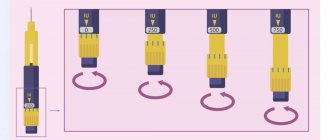Compound
- One hard gelatin capsule of Mildronate contains 250 or 500 mg of meldonium in the form of dihydrate as an active component and excipients: potato starch, colloidal silicon dioxide, calcium stearate. Gelatin and titanium dioxide are used to make the gelatin shell.
- One Mildronate tablet contains 500 mg of meldonium in the form of phosphate and auxiliary components: mannitol E421, povidone K-29/32, potato starch, silicon dioxide, microcrystalline cellulose, magnesium stearate.
- One milliliter of Mildronate injection solution contains 100 mg of meldonium and water for injection as an auxiliary component.
Contraindications
Children under 18 years of age are contraindicated to take Mildronate.
Contraindications to the use of the drug Mildronate (for all forms of release of the drug) are:
- increased individual sensitivity to the active substance of the drug - meldonium - or any of the auxiliary components of the drug;
- intracranial hypertension, including those caused by intracranial tumors and disorders of venous outflow;
- children under 18 years of age;
- pregnancy and breastfeeding period.
Release form
The drug Mildronate is produced by the manufacturer in the form:
- clear colorless solution for injection;
- hard gelatin capsules No. 1 and No. 2, filled with hygroscopic white crystalline powder. The powder contained in the capsules has a weak characteristic odor and a sweetish taste (the capsule itself has a neutral taste);
- tablets Mildronate Gx 500 mg (tablet taste slightly sour).
The solution is sold in 5 ml ampoules (500 mg/5 ml). One cardboard package contains: 2 blister packs with 5 ampoules of Mildronate in each and instructions for use of the drug.
Capsules are packaged in blisters of 10 pieces each. One cardboard box contains 4 blisters and instructions for use of the drug.
pharmachologic effect
Meldonium is a synthetic drug that has a similar effect to γ-butyrobetaine (a substance that is a precursor to hydroxytrimethylaminobutyric acid, a natural vitamin-like substance related to B vitamins).
According to Wikipedia, meldonium is characterized by its ability to improve metabolism and energy supply to cells and is used as:
- cardioprotective;
- antihypoxic;
- angioprotective;
- antianginal agent.
The mechanism of action of meldonium determines a wide range of its pharmacotherapeutic properties. Taking this drug helps improve performance, reduces the severity of manifestations of mental, intellectual and physical stress, and activates tissue and humoral immunity.
In patients suffering from heart failure , it increases the strength of contractions of the heart muscle, reduces the frequency of heart attacks ( angina ), and also increases the body's tolerance to physical activity.
In case of acute myocardial damage, the use of meldonium slows down the formation of necrotic zones, shortens the duration of the rehabilitation period, normalizes blood circulation in the area of ischemic damage and redistributes blood in favor of the ischemic area.
Under conditions of increased stress, meldonium helps restore the balance between the transport of oxygen into cells and the cells' need for it, prevents the accumulation of cellular metabolic products and toxic substances in cells, protects cells and cellular structures from damage, ensures rapid compensation by the body of its energy reserves and maintains the highest speed metabolic processes.
By toning the central nervous system, meldonium effectively eliminates disturbances in the functional state of the somatic and autonomic (autonomic) parts of the nervous system, including disorders that accompany withdrawal syndrome in patients suffering from chronic alcoholism .
In addition, the substance has a beneficial effect on the condition of dystrophically altered retinal vessels, which makes it possible to use it for the treatment of vascular and dystrophic pathologies of the fundus.
Effect of the drug
Meldonium improves metabolic processes in the heart muscle and provides energy to the myocardium, as well as:
- improves blood circulation in the brain;
- normalizes the inflow and outflow of blood in areas with insufficient blood supply;
- slows down the formation of a zone of tissue death;
- brings myocardial performance indicators back to normal;
- provides brain and heart cells with oxygen;
- removes toxins;
- normalizes the functioning of the nervous system;
- shortens the rehabilitation period after heart surgery or stroke;
- helps in the treatment of alcoholism.
Pharmacodynamics and pharmacokinetics
The action of the active substance of the drug is aimed at inhibiting the enzymatic activity of γ-butyrobetaine hydroxylase, which is the last enzyme in the chain reaction of l-carnitine .
Meldonium helps reduce the concentration of free carnitine , prevents the transport of long-chain fatty acids across cell membranes, and prevents the accumulation in cells of activated forms of unoxidized fatty acids, which are derivatives of acylcarnitine and acyl coenzyme .
In ischemic tissues, it restores the balance between the transport of oxygen and its absorption by cells, prevents disruption of the transport of adenosine triphosphate, while simultaneously activating glycolysis, which occurs without additional oxygen consumption.
The result of a decrease in carnitine concentration is increased synthesis of the vasodilator γ-butyrobetaine.
After taking Mildronate tablets per os, the meldonium it contains is quickly absorbed in the digestive tract. The drug is characterized by a fairly high bioavailability index. The latter is approximately 78%.
The concentration of meldonium in the blood plasma reaches its maximum values an hour or two after administration. In the body, meldonium is metabolized to non-toxic products - glucose, succinate, 3-hydroxypropionic acid.
Metabolites are excreted by the kidneys. The half-life (T½), depending on the characteristics of the particular organism and the dose taken, can range from three to six hours.
The drug in injection form is characterized by 100% bioavailability. The concentration of meldonium in the blood plasma reaches its maximum values immediately after administration of the drug. The half-life (T½), depending on the characteristics of the particular organism and the dose taken, can range from three to six hours.
The result of the metabolization of meldonium is the formation of non-toxic metabolites (glucose, succinate, 3-hydroxypropionic acid), which are then excreted from the body by the kidneys.
Indications for use of Mildronate
What are Mildronate tablets for and what is the medicine for in the form of injections?
All dosage forms of the drug are intended for the treatment of adult patients.
Indications for use of Mildronate (for all dosage forms of the drug):
- IHD (in combination with other drugs and treatment methods);
- peripheral artery disease;
- reduced performance;
- encephalopathy;
- physical overload (including in sports);
- postoperative period (to speed up the recovery of the body);
- chronic heart failure
- cardialgia (pain in the left side of the chest) caused by dyshormonal myocardiopathy ;
- bronchial asthma;
- COPD;
- alcohol withdrawal (as an addition to specific therapy);
- stroke.
Additional indications for the use of drug injections:
- hemorrhage into the vitreous cavity of the eye ( hemophthalmos );
- hemorrhage in the retina of the eye;
- thrombosis and occlusion of the central retinal vein or its branches;
- retinopathy of various origins (for example, hemorrhagic or diabetic ).
Use of Mildronate in sports
Mildronate is a drug that is characterized by the ability to expand the range of tolerance to physical (both dynamic and static) stress and intellectual function not only in ischemic injuries, but also in healthy people.
The drug is very useful for athletes due to its properties to improve the nutrition of the heart muscle and other muscles of the body and reduce fatigue, while simultaneously increasing the effectiveness of sports training.
Contrary to popular belief, Mildronate is not used as a means to increase muscle mass. Its task in sports and in bodybuilding in particular is somewhat different: Mildronate for athletes is indicated as a prophylactic agent that prevents fatigue (including the heart muscle) and overtraining.
In addition, by promoting faster removal of breakdown products from cells and accelerating the restoration of cellular energy resources, Mildronate improves metabolism at the cellular level and accelerates muscle recovery in athletes after physical activity. Moreover, the latter applies to both strength loads and physical loads on the speed and/or endurance of the body.
There is an opinion that the use of Mildronate in sports can provoke fatty liver hepatosis . However, it is unfounded.
Mildronate prevents fatty acids from penetrating into the cells and thus prevents the accumulation of fats in the liver. In addition, by burning predominantly sugar, the body spends a larger amount of raw materials, which are fats, for each molecule of adenosine triphosphate produced ( that is, for energy production).
Meldonium was not classified as a doping drug until January 1, 2021, which made it possible to use it absolutely legally in all sports.
However, after the introduction of a ban on the use of the drug by the World Anti-Doping Agency (WADA) at the beginning of 2021, a number of athletes, mainly from Russia and the former CIS countries, were caught using this drug. Mildronate also became the subject of a huge scandal when Maria Sharapova admitted using this doping on March 7, 2021.
Mildronate - a little history
Mildronate is also known as Meldonium. Actually, meldonium is the active ingredient of mildronate.
Meldonium was developed in the 1970s by Ivars Kalvins - then director of the Institute of Organic Synthesis of the Academy of Sciences of the Latvian SSR - one of the leading research institutes in this field in the USSR. It was his scientists who were instructed to make a “product for household use” from meldonium, which then had a military purpose.
Initially, the development was called “mildronate”. It was registered in 1976, and began to be used in 1984. On December 7, 2011, by order of the government of the Russian Federation, meldonium was included in the list of vital and essential drugs.
As of January 1, 2021, meldonium is banned by the World Anti-Doping Agency (WADA) for pre- and non-competition use by athletes. Then, many famous Russian athletes, for example, tennis player Maria Sharapova, were disqualified for using meldonium, although they claimed that they last took it in 2015. The international doping scandal was just beginning to gain momentum...
By the way, L-carnitine, a popular dietary supplement that is freely sold in many countries and is not on the list of prohibited drugs, has properties similar to meldonium.
Side effects
Side effects caused by taking Mildronate occur quite often. Typically they are expressed as:
- allergic reactions (redness, skin rashes, itching and swelling);
- dyspeptic symptoms, manifested by belching, attacks of nausea, vomiting, heartburn, a feeling of fullness in the stomach even after a small portion of food;
- tachycardia;
- increased arousal;
- decrease in blood pressure.
Instructions for use of Mildronate
You can often come across questions “.. can Mildronate be administered intramuscularly?” or “.. is it possible to inject the drug intramuscularly?”
The instructions for medical use indicate that the drug in injection form is intended for intravenous administration, and capsules and tablets are intended for oral administration (per os).
Dosage forms for oral administration should be taken whole, without chewing, crushing or pouring out the contents of the capsules.
Mildronate for intravenous administration is produced in finished form. Mildronate should be administered intravenously separately from other drugs; dilution with an aqueous solution of sodium chloride is not required (however, in some cases it is allowed).
When injected into a muscle, the injection solution has an irritating effect and can provoke local pain and local allergic reactions. For this reason, the drug Mildronate is usually injected into a vein.
Mildronate injections: instructions for use, why they are prescribed and how to dose the injection solution
Indications for the use of Mildronate injections: unstable (progressive) angina pectoris , myocardial infarction , vascular pathologies of the fundus and cerebral circulatory disorders.
For patients with coronary syndrome, the drug is administered into a vein as a bolus at a dose of 500-1000 mg once a day. After this, therapy is continued by taking tablets or capsules.
For patients with vascular pathologies of the fundus of the eye, the medicine is administered retrobulbarly (behind the eyeball) or subconjunctivally (under the outer shell of the eyeball) 0.5 ml for 10 days.
For patients with cerebral circulatory disorders in the acute stage, the solution is administered into a vein once a day at a dose of 500 mg. The duration of the therapeutic course is 10 days. Further treatment is carried out using oral dosage forms.
Patients with chronic cerebral circulatory disorders are advised to administer Mildronate intramuscularly one to three times a day at a dose of 500 mg (optimally before lunch). The duration of the therapeutic course is from 2 to 3 weeks.
Mildronate tablets: instructions for use
For patients with diseases of the cardiovascular system, Mildronate tablets and capsules are indicated in combination with specific therapy. The drug is taken at 500-1000 mg per day. The entire dose can be taken either at once or divided into two doses.
As a rule, the course of treatment lasts from 4 to 6 weeks.
For cardialgia caused by dishormonal myocardiopathy , Mildronate is taken once a day, one 500 mg tablet or 2 250 mg tablets.
For patients with cerebral circulatory disorders, after eliminating acute disorders, the drug is recommended to be used at a dose of 500-1000 mg per day. Take it in one dose or divided into two doses.
Patients with chronic cerebral circulatory disorders are recommended to take 500 mg of Mildronate per day.
The duration of treatment varies from 4 to 6 weeks. At the discretion of the attending physician, the patient may be prescribed repeated courses of treatment (usually two or three times a year).
Patients with pathologies of peripheral arteries are prescribed to take the drug twice a day, 500 mg. The recommended dose for increased intellectual and physical stress on the body (including athletes) is 1000 mg, which should be divided into two doses.
The duration of treatment is from 10 to 14 days. If necessary, the course is repeated after a two- or three-week interval.
In the period before training, athletes are recommended to take Mildronate twice a day at a dose of 500-1000 mg. The duration of treatment in the preparatory period is usually from two to three weeks; during the competition period its duration varies from 10 to 14 days.
For alcohol withdrawal , patients suffering from chronic alcoholism should take Mildronate 500 mg four times a day. The duration of the course is from 7 to 10 days.
The maximum permissible daily dose is considered to be 2000 mg.
How Mildronate works
The active substance meldonium, acting in several directions at once, establishes a balance between the cells’ need for oxygen and its delivery, removes accumulated toxins and neutralizes their negative impact on the body. Thanks to this, a person taking Mildronate becomes more resilient to mental and physical stress and gets an improved metabolism.
Other results of using Mildronate:
- normalization of cerebral circulation;
- improvement of blood circulation in the area of ischemia;
- slowing down the formation of the necrotic zone;
- elimination of functional disorders of the nervous system;
- reduction of the rehabilitation period in the treatment of heart disease, stroke and alcoholism
Mildronate is easily absorbed and excreted from the body after 3-6 hours. Although traces of it can still be found for several months.
Interaction
Combination of Mildronate with antianginal, antiarrhythmic, anticoagulant, antiplatelet and diuretic drugs, cardiac glycosides, bronchodilators and other drugs is allowed.
Mildronate has the ability to potentiate the effect of Nitroglycerin and β-adrenergic blockers, Nifedipine and other drugs with coronary action, antihypertensive drugs, as well as drugs whose action is aimed at dilating peripheral blood vessels.
Due to the possible development of moderate tachycardia and a decrease in blood pressure, the above drugs should be used in combination with Mildronate with caution.
How to take Mildronate
The treatment regimen should be determined by the attending physician, taking into account the severity of the disease and the patient’s medical history. Self-medication can only worsen the condition.
Before taking Mildronate, be sure to consult your doctor!
The drug is taken at 500-1000 mg per day. The appointment can be one-time or divided into appointments throughout the day. It is worth noting that Mildronate can provoke overexcitation, so it is recommended to take it in the first half of the day and no later than 17:00. As a rule, the therapeutic course lasts from 4 to 6 weeks.
The tablets should be taken whole, without chewing or crushing in any other way. Injections are given intravenously, parabulbarly or intramuscularly. Moreover, Mildronate is administered intravenously separately from other medications. It does not need to be diluted with sodium solution. It is not recommended to administer Mildronate intramuscularly, as pain may occur or an allergic reaction may develop.
| Disease | Course duration | Dosage |
| Ischemia (angina pectoris, myocardial infarction), chronic heart failure | 4-6 weeks | As part of complex therapy 0.5-1 g 1-2 times/day |
| Cardialgia developing against the background of dyshormonal myocardial dystrophy | 12 days | 250 mg 2 times/day |
| Cerebrovascular insufficiency | 4-6 weeks | As part of complex therapy 0.5-1 g 1-2 times/day |
| Chronic cerebrovascular accidents | 2-3 times a year for 4-6 weeks | As part of complex therapy 500 mg/day |
| Physical and mental stress and decreased performance | 10-14 days | 500 mg 2 times/day |
| Athletes before training | 14-21 days during the preparatory period and 10-14 days during competitions | 0.5-1 g 2 times/day |
| Chronic alcoholism and withdrawal syndrome | 7-10 days | As part of complex therapy 0.5 g 4 times a day |
| After a heart attack | 4-5 weeks | On the first day, 0.5-1 g of solution is administered intravenously. Then the patient is transferred to tablets - 250 mg 2 times / day |
| Bronchial asthma | 3 weeks | As part of complex therapy 1 time/day |
| Vascular pathologies of the fundus | 10 days | Retrobulbar or subconjunctival 0.5 ml |
| Coronary syndrome | As prescribed by a doctor | IV 0.5-1 g solution 1 time/day. |
It is worth noting that Mildronate is combined with the following medications:
- diuretics;
- bronchodilators;
- antiplatelet agents;
- antiarrhythmic drugs;
- antianginal drugs.
In some cases, Mildronate, due to increased action and the possible development of moderate tachycardia and a decrease in blood pressure, should use the following medications with caution:
- cardiac glycosides;
- beta blockers;
- drugs that lower blood pressure.
As for taking Mildronate in combination with alcohol, in general there is no direct prohibition. However, the combination of the drug and alcoholic beverages can provoke:
- tachycardia;
- pronounced allergic reactions;
- sharp fluctuations in blood pressure;
- dyspeptic symptoms.
The increased risk of various types of complications and the likelihood of relapse of the disease indicate that alcohol should be excluded for the entire period of treatment.
special instructions
Due to the fact that the drug can provoke a stimulating effect, it is recommended to use it in the first half of the day.
There are no data regarding the ability of Mildronate to change the reaction rate and influence transport control.
The drug is prescribed with caution to people with liver and/or kidney pathologies.
Experience in treating patients with myocardial infarction and unstable angina shows that the active substance Mildronate is not a first-line drug for ACS.
Contraindications, side effects, overdose
Mildronate is prohibited for use:
- Under the age of 18;
- Pregnant and breastfeeding;
- With increased intracranial pressure;
- With a brain tumor;
- If you are sensitive to substances contained in the drug.
The drug is strictly contraindicated in liver failure. In chronic forms of diseases, it can be taken for a short period and after the course, an examination can be carried out in case of complications.
Acute renal failure is noted as a contraindication. In case of chronic kidney disease, the drug should be taken for a long time with caution, monitoring the condition of this organ. Clinical studies of the drug's effects on the kidneys have not been conducted.
It is also not recommended to combine Mildronate with drinking alcohol. You can drink alcohol 12 hours after taking the drug so that the active substance is removed from the body.
Side effects are observed either due to individual intolerance to the components of the drug, or when taken incorrectly. Among them:
- skin rashes;
- malaise;
- decrease or increase in blood pressure values;
- excitability;
- diarrhea.
If any disturbances are observed, you should consult a doctor and possibly change your therapy.
Keep in mind that tachycardia is possible when taking Mildronate simultaneously with nitroglycerin and nifedipine or antihypertensive drugs. In general, Mildronate combines well with other medications, especially with drugs against pulmonary diseases and arrhythmia.
There is also no data on the adverse effects of the drug in case of overdose. But it is better to rinse your stomach and consult a doctor.
Mildronate is well tolerated by the body without causing toxicity. Rarely, increased blood pressure, tachycardia, nausea, and weakness are possible.
Store the drug at a temperature not exceeding 25 degrees Celsius and out of the reach of children.
Analogues of Mildronate
Level 4 ATX code matches:
Vazonat
Phosphaden
Hawthorn fruit
Preductal
Meldonium
Angiosil Retard
Ranexa
Lily of the valley tincture
Neocardil
Rimecore
Triductane
ATF-Long
Hawthorn tincture
Triductan MV
Trimectal MV
Trimectal
Neoton
Predisin
Trimetazidine
Tivortin Aspartate
Analogues of Mildronate:
- Vasopro
- Vazonat
- Metamax
- Methonate
- Trizipin
- Mildracore
- Mildrocard
- Cardionate
- Melfort
- Idrinol
- Riboxil
- Meldonium
The price of drug analogues starts from 170 rubles.
Riboxin or Mildronate - which is better?
Riboxin is a natural compound found also in the human body.
Being a precursor of adenosine triphosphate , it helps to increase the energy balance of the heart muscle, improve coronary circulation, reduce the severity of the consequences of intraoperative ischemic kidney damage, stimulate the production of nucleotides and the activity of individual enzymes of the citrate cycle.
The drug has a positive effect on metabolic processes in the heart muscle, increases the force of its contractions and stimulates its more complete relaxation in diastole, which in turn leads to an increase in stroke volume (stroke volume of blood).
Mildronate has a similar effect, but is not itself involved in the synthesis of other substances. At the same time, the drug regulates the activity and biosynthesis of enzymes involved in energy production, and thus normalizes metabolism.
The conclusion is this: Mildronate is a drug whose action is aimed at correcting metabolic processes, while Riboxin takes part in biochemical reactions and is a means of metabolic action.
To obtain the expected effect from the use of Riboxin, it should be administered in quantities that are comparable to its consumption in the body. And since Riboxin is used by the body in various reactions, it is required in very large quantities.
Mildronate, on the contrary, is not consumed in metabolic reactions, its effect lasts for a longer period of time, and its body requires much less than Riboxin.
Therefore, the use of Mildronate also improves the body’s use of Riboxin. Thus, the combined use of these drugs will potentiate each other's effects.
Cardionate or Mildronate - which is better?
Cardionate and Mildronate are synonymous drugs. They are based on the same active ingredient, so both products have a similar mechanism of action.
The only difference is that, unlike Mildronate, Cardionate is available only in the form of 250 mg capsules and 500 mg/5 ml injection solution.
Alcohol compatibility
The active substance of Mildronate is excreted from the body within 12 hours, therefore, after this time, the risk of interaction of the drug with another active substance is extremely low or completely absent.
In general, drinking alcohol during treatment with Mildronate is not prohibited; however, if this drug is used to treat a cardiovascular disease or a cerebral circulatory disorder, the patient is still advised to stop drinking alcohol.
This is due to the fact that taking the drug in combination with alcohol can negate all the positive results that have been achieved in treating the disease.
Taking Mildronate with alcohol can provoke:
- tachycardia;
- pronounced allergic reactions ;
- sharp fluctuations in blood pressure;
- dyspeptic symptoms.
The poor compatibility of Mildronate with alcohol is due to an increased risk of various types of complications and the likelihood of a relapse of the disease. For this reason, alcohol should be excluded for the entire period of treatment with the drug.
Use of Mildronate in sports
Mildronate is highly valued by athletes for its ability to improve cellular metabolism, as it accelerates the removal of toxins and free radicals from the body. Thus, Mildronate has an antioxidant effect: it improves well-being, slows down the aging process of cells and helps rapid muscle recovery.
Athletes take the drug to reduce pain and recover faster after training. As a result of taking Mildronate, symptoms of overtraining are relieved and fatigue goes away. The athlete’s general condition improves, which can affect his personal performance.
The benefits of the drug are difficult to overestimate during periods of intense physical activity, when training goes on almost without a break, for example, before a competition, and the body does not have time to rest.
Mildronate is recommended to be taken for up to 6 weeks without a break, so as not to cause addiction to the drug. To obtain good results, taking Mildronate should be combined with proper nutrition and daily routine.
Use of Mildronate during pregnancy and lactation
The safety of Mildronate for the treatment of pregnant women has not been proven. To exclude the possibility of its adverse effects on fetal development, the drug is not prescribed during pregnancy .
It has not been established whether meldonium can be excreted in the milk of a nursing woman. Therefore, if treatment with Mildronate is indicated for the mother, she must stop breastfeeding .
Reviews of Mildronate
Reviews about Mildronate on forums are mostly positive . The unique mechanism of action of this drug allows it to be widely used to eliminate problems with the cardiovascular system, as well as as a means of increasing performance in healthy people who are subject to frequent physical and intellectual overload.
Both patients in cardiology departments, doctors, and athletes note the fact that Mildronate provokes a tonic effect. Its use significantly improves memory function, accelerates thought processes, increases dexterity, endurance and the degree of body resistance to adverse factors.
Reviews from cardiologists confirm the data of numerous studies that have shown that the use of Mildronate in capsules and in the form of a solution for injections can reduce the incidence of repeated myocardial infarction .
Reviews from patients about Mildronate allow us to conclude that the drug is simply necessary for people whose activities are associated with increased stress on the body, as well as during the recovery period after prolonged alcohol abuse, with pain and burning in the heart, VSD and other pathologies of the cardiovascular system .
The average rating for this product is quite high. However, sometimes you come across negative reviews about Mildronate. It is important to remember that, like any other drug, Mildronate gives a good result only if its dose and concomitant treatment (if necessary) are selected correctly.
Price, reviews, analogues
The price of Meldonium depends on the number of capsules in the package and the concentration of the main substance. The price for a package of 30 pieces with a dosage of 250 mg costs from 170 rubles, 60 pieces - from 320 rubles, 60 pieces with a dosage of 500 mg - from 550 rubles.
Structural analogues of Meldonium are Mildronate, Idrinol, Cardionate.
Reviews of Meldonia from doctors are generally positive. The drug has shown effectiveness in the treatment of withdrawal symptoms and cardiac pathologies, is well tolerated by patients and increases endurance.
Patients note a surge of strength and faster recovery after training, but it is not recommended to use it in the treatment of diseases of the cardiovascular system without a doctor’s prescription.
Mildronate price
Price of the drug in Russia
You can buy 250 mg capsules in Russian pharmacies for an average of 300 rubles, 500 mg capsules for 650 rubles. The price of Mildronate for intravenous administration is 350 rubles. Price Mildronate Gx 500 mg - about 800 rubles.
Price of the drug on the Ukrainian market
The average price of Mildronate 250 mg tablets is 250 UAH. The price of Mildronate ampoules of 5 ml is 450 UAH. 500 mg capsules cost about 400 UAH per package. Mildronate GX is sold for an average of 450 UAH.
Moreover, Mildronate injections, tablets and capsules in pharmacies in Kharkov or Odessa are somewhat cheaper than in most pharmacies in the capital.
- Online pharmacies in RussiaRussia
- Online pharmacies in UkraineUkraine
- Online pharmacies in KazakhstanKazakhstan
ZdravCity
- Mildronate caps.
500 mg 60 pcs. JSC Grindeks 586 rub. order - Mildronate solution IV, IM and parabulb. input 100 mg/ml amp. 5ml No. 10HB Pharma s.r.o.
RUB 359 order
- Mildronate caps. 250 mg 40 pcs. JSC Grindeks
RUB 264 order
- Mildronate solution for IM, IV and parabulb. input 0.1g/ml 5ml 20pcsHB Em Pharma s.r.o.
675 rub. order
Pharmacy Dialogue
- Mildronate capsules 500 mg No. 60Grindex
RUR 568 order
- Mildronate 10% ampoules 5ml No. 10Grindex/HM Pharma
RUB 312 order
- Mildronate (amp. 10% 5ml No. 10)Grindex
RUB 341 order
- Mildronate (amp. 10% 5ml No. 10) Sotex
350 rub. order
- Mildronate (amp. 10% 5ml No. 10) Sanitas
RUB 334 order
show more
Pharmacy24
- Mildronate 0.5 g/5 ml 5 ml No. 10 solution AT "Grindeks", Latvia
830 UAH. order - Mildronate 500 mg N60 capsules AT "Grindeks", Latvia
409 UAH order
- Mildronate GX 500 mg N60 tablets AT Grindeks, Latvia
442 UAH order
- Mildronate 5 ml N10 solution AT "Grindeks", Latvia/HBM Pharma s.r.o., Slovakina
461 UAH order
PaniPharmacy
- Mildronate capsule Mildronate caps. 0.25g No. 40 Latvia, Grindeks
251 UAH order
- Mildronate GX tablets Mildronate GX tablets 0.5g No. 60 Latvia, Grindeks
487 UAH. order
- Mildronate ampoule Mildronate solution d/in. 10% amp. 5ml No. 10 Lithuania, Sanitas
450 UAH. order
- Mildronate solution d/in.amp.0.5g/5ml 5ml N20
901 UAH. order
- Mildronate capsule Mildronate caps. 0.5g No. 60 Latvia, Grindeks
412 UAH. order
show more
